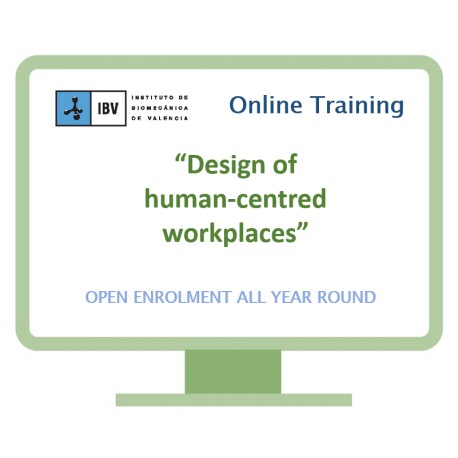Ningún producto
Producto añadido correctamente a su carrito de la compra
Hay 0 artículos en su carrito. Hay 1 artículo en su carrito.
 Ver más grande
Ver más grande Design of human-centred workplaces
Train4HCWork_Eng
Human centered workplaces are a key essential part of the factories of the future. How can we design a workplace focused on human needs and job skills?
The purpose is to promote effectiveness and efficiency at work, improving human well-being and satisfaction, and minimizing possible adverse effects on health, safety, and performance.
OPEN REGISTRATION
”It´s a shame we don´t create workspaces where we flourish” (Dr Nigel Oseland)
[*] This course in not tutored.
Más
DESCRIPTION
Human-centred manufacturing is one of the researches and innovation priorities of the European Factories of the Future Research Association (EFFRA). The workplaces of the future will give much more importance to human knowledge, skills and cultural background, in particular through life-long learning and training. Human-centred workplaces not only remain essential in the pursuit of reduced occupational and work-related diseases and injuries, and absenteeism, but they will also become increasingly critical to ensure the flexibility, agility, and competitiveness that will be imposed on future manufacturing operations.
The continuous intensification of interactions between technology and human operators raises complex safety and efficiency problems that, to a great extent remain unsuitably addressed. This is partly due to their highly context specific characteristics, which challenge many standard and well-established approaches. In this context, the cooperation between ergonomics practice and expertise, and all other relevant inputs to the design of work systems becomes increasingly critical.
OBJECTIVES
Human centered workplaces are a key essential part of the factories of the future due to important advantages:
• Increase flexibility.
• Increase agility.
• Increase competitiveness.
• Reduce occupational and work-related diseases.
• Reduce absenteeism.
• Reduce sick level caused by injuries.
ADDRESSED
• To professionals from engineering and design departments.
• To professionals from departments of labour risk prevention, human resources and organisation.
• To any professional interested in acquiring knowledge in the ergonomic design of work environments.
CONTENT
Module 1: Introduction and importance of ergonomics.
Module 2: Anthropometry.
Module 3: Biomechanics and work psychology.
Module 4: Mental workload.
Module 5: Environmental conditions.
TECHNICAL REQUIREMENTS
Software and hardware required: Computer with audio and internet connection, web browser and email.
Previous knowledge required: Basic management of a web browser.
CERTIFICATE
The student who has passed the assessment will be awarded by a certificate of compleiton, issued by the Instituto de Biomecánica (IBV).
Learning Guide


